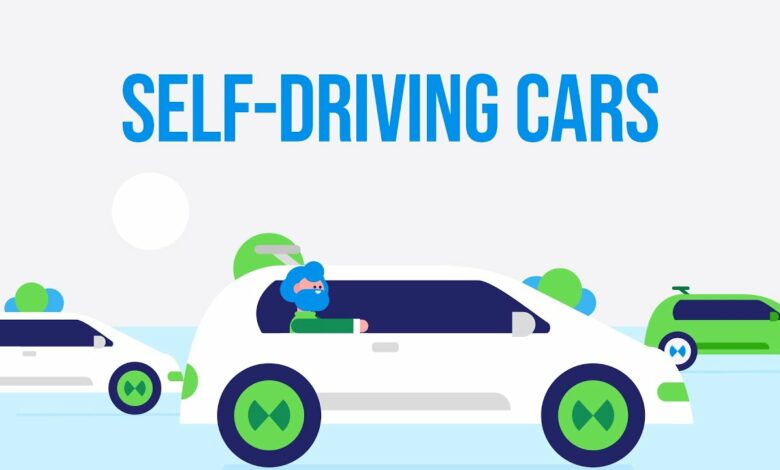What are the Negatives of Self-Driving Cars?

Self-driving cars, as the name suggests, are cars that are capable of moving without any human input. They are the ground automobiles that consist of sensors and programs that allow the cars to sense the environmental states and move accordingly.
At the current state, a self driving car also requires a valid driving license. Passing the theory test ensures that you know the basic rules and signs to make you safe on the road. For the most hands down process, you can get the most out of the g1 practice test. The practice tests make you prepared for different types of MCQs that may appear on the theory test.
Also popularly known as autonomous cars, they have been a hot topic in the tech industry for quite a time now. Autonomous cars may well remain a hot topic for some more time as there still are many fields to explore in this area and mostly because there are many shortcomings or negatives of these robots that are to be addressed.
1. High cost of cars
Automobile industry experts predict that autonomous cars will cost hundreds of thousands of dollars. This makes it very difficult for common working people to own an autonomous car. The high cost of self-driving cars is the result of the sophisticated technology that is used in these cars and also the electronic components used in these automobiles are too expensive.
Not only that, autonomous cars use a huge amount of heavy earth metals for their efficient performance. These valuable heavy earth metals are available in limited amounts on the earth and are very expensive to extract. Thus, the price of self-driving cars will just go up as the heavy earth metals increasingly get undersupplied.
2. Privacy concerns
Big amount of data is required to train the autonomous driving models. Autonomous cars would use and store user information constantly for it to work properly. The users might not get the information about where their data is stored and for what other purpose their valuable data is being used.
3. Height regulatory restrictions
Any mistake in the manufacture and maintenance of self-driving cars can cost a huge loss in lives and wealth. Therefore, there might be some very strict regulations in this field.
4. Difficult and costly maintenance
Many currently outstanding car repair and maintenance services might not have the skills and manpower required to conduct the repair and maintenance of self-driving cars. Thus, hiring very scarcely available skilled manpower and fixing the sophisticated AI-enabled systems in these autonomous cars might be very much difficult and costly.
5. Motion sickness
Research conducted by Michael Sivak and Brandon Schoettle from The University of Michigan, Transportation Research Institute in April 2015 suggests that 6-12% of the passengers of an autonomous car will experience motion sickness, which results in nausea, dizziness, and even vomiting in some cases.
The study included responses from 3,255 adults in the United States of America and five other countries (China, India, Japan, the United Kingdom, and Australia).
6. Costly infrastructure changes
To integrate self-driving vehicles into the current cities of the world, some major changes will have to be made in the existing transportation infrastructures. The most important and the biggest change will be making dedicated road lanes for autonomous vehicles. Road navigation in these self-driving cars takes place differently than in normal human-driven cars.
Thus, some infrastructures such as transmitters in traffic lights, traffic signs with sensors, and roundabouts might be needed to develop on the roads. All these extra-infrastructures incur a heavy infrastructure cost. In fact, in most cases, normal taxpayers will have to bear the cost. Most people might not be thrilled to pay extra taxes for developing the infrastructures that they are not even able to use.
7. Unemployment problem
Self-driving cars are expected to cut off the employment of a huge number of drivers all around the world in their full-fledged execution. There are roughly 900,000 Uber cab drivers in the United States of America alone.
Similarly, Lyft has currently more than 1.5 million drivers in the United States and Toronto. In the full application of self-driving cars in the distant future, all these drivers are sure to lose their jobs. This will create a huge unemployment problem all around the world.
8. The possibility of even worse road accidents
The self-driving cars are driven by computer devices that function on the inputs provided by sensors. Even a minor computing malfunction may cause even worse road accidents than that of a car driven by humans.
9. Responsibility issues
If a driverless self-driving car crashes and causes casualties, who will be responsible for the crash? Who will be guilty? Who should compensate for the damage? The car owner? The car maker? The insurance company? The answers to these questions can be very ambiguous and bewildering.
10. Problems related to weather conditions
The sensors incorporated into the AI system of self-driving cars can be vulnerable to extreme weather conditions. For example, Rain or snow can obstruct the input of the sensors and cameras embedded in the computing system, which may result in the system not being able to read human behaviour and road signs.
11. Difficulty in understanding human behaviour
Robots may not be able to read and understand human behaviour as well as humans themselves. For example, while driving on the road, if the computer system of self-driving cars cannot recognize what signs the pedestrians are showing to the car, then unwanted results may be obtained.
12. Prone to Getting Hacked
Self-driving cars are run by the computational power of AI-based computers and software inside the system. Thus, this makes self-driving cars vulnerable to hacking issues. Hackers may be able to hack the system and make the cars perform as the hackers want. This might bring some serious security concerns in the field of self-driving cars.
13. The fun of driving may decrease
Some people have driven as their hobby. Many people find it interesting to be able to drive. The use of autonomous cars may take away this excitement from people.
In a nutshell, despite all the thrill and excitement that self-driving cars bring to the human mobility world, the manufacturers are sure to have a hard time mitigating the shortcomings that come along. The world may take more than a decade to accept these changes in the traditional transportation system.



